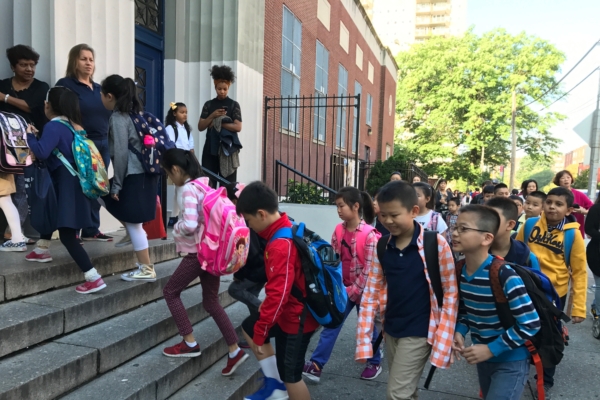With the influx of a large number of undocumented immigrants, the enrollment rate in public schools in New York City has increased for the first time in eight years, with an increase in students whose native language is not English. Additionally, the number of African American students in public schools has decreased, while the number of Asian students has increased, with the two groups now having a similar ratio.
According to the final enrollment data released by the city’s Department of Education last month, the total number of registered students from Pre-K to 12th grade for the previous academic year, 2023-24, reached 912,000, slightly higher than the 906,000 in the 2022-23 school year. This marks the first increase in public school enrollment in eight years. An analysis based on the latest data by the education website Chalkbeat indicates that the student population has undergone changes, creating new demands. The Department of Education should prepare early to meet these needs.
In the past two academic years, approximately 40,000 immigrant students from Latin America, West Africa, and other regions have entered public schools, requiring English language learning. As a result, the number of students who must learn English has increased from 135,000 in the 2022-23 school year to over 148,000 in the 2023-24 school year, now accounting for 16.3% of public school students. This is higher than the 13.3% in the 2019-20 school year, necessitating the hiring of more bilingual staff and teachers to instruct students learning English.
Meanwhile, the percentage of black students in public schools continues to decrease, dropping from 28% in the 2011-12 school year to the current 19.5%. On the other hand, the percentage of Asian students continues to rise, currently accounting for 18.7% of all students, with a difference of less than one percentage point compared to black students. Despite public schools increasing the inclusion of Asian American history and culture courses, the ratio of Asian teachers is only 7.8% of all teachers, failing to keep up with the increase in Asian students.
Furthermore, two indicators measuring student poverty levels show a slight increase in the past year: the rate of students receiving free or reduced-price lunches rose from around 73% in the previous four school years to 75% in the last school year. The “economic index,” which takes into account factors such as homelessness or non-English speaking background, also increased from 72.2% to 73.3% this year.
Although education officials are optimistic about maintaining a stable enrollment rate in public schools, with a projected 0.2% increase in the next academic year, annual enrollment predictions commissioned by the School Construction Authority responsible for overseeing the construction of new public schools suggest a significant decline in enrollment in the coming years due to long-term trends such as declining birth rates and increasing outward migration.

